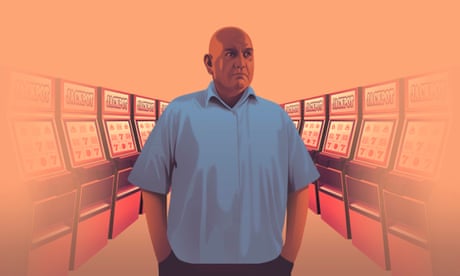Extract from The Guardian
Research shows suicide rates can peak up two to three years after a crisis. We’re seeing this play out.

There has been a lot of discussion about the need for gambling reform, quite rightly, but there is one important element that has been left out of the conversation – suicide.
Gambling is not only causing harm to people’s financial situation and relationships, it is risking people’s lives. The risk of suicide needs to be part of the dialogue if we’re to have a true understanding of the harm gambling is causing.
Reform is not just necessary, it’s urgent and it’s a non-negotiable, particularly when lives are at stake.
Australia is home to less than half a per cent of the world’s population but 20% of its poker machines. In New South Wales we have almost half of Australia’s 200,000 poker machines. There has also been a 300% increase in online gambling in the last two years and Australia now holds the unwanted position of being the country with the highest rate of gambling losses per person in the world.
Gambling apps are easy to access are and increasingly pushing the boundaries. A new sports betting app controversially entered the market by offering 100-to-1 odds on all runners in the Melbourne Cup. This marketing tactic attracted more than 300,000 new customers.
During a consultation we heard from a lawyer from a gambling legal service who shared that, in one day, four out of six clients admitted they were considering suicide.
A financial counsellor also shared that a bank had extended a line of credit of $120,000 to an aged pensioner, which should not have been granted. That person attempted suicide.
These are only a handful of the stories that we’ve uncovered and, sadly, there are many more like it. We know that gambling-related suicides are happening. But they are under-reported and not getting the policy attention they deserve.
Gambling regulation is failing to provide adequate consumer protection and myriad state and federal regulators are operating in silos. Not to mention the advertising, which is pervasive and targeted towards those most at risk of experiencing the harms of gambling, and often those most at risk of suicide.
Data from NSW suggests that of those who seek help for gambling problems, as many as 11% attempt suicide. Other studies found that almost one in five people presenting with suicidality also experienced problems with gambling.
So how can we better protect people at risk?
First, it is important to understand that suicide is complex human behaviour with many varied risk factors, including social and economic factors. We know that problematic gambling can heighten two key risk factors for suicide – financial hardship and relationship breakdown. Protective factors, such as social and financial supports, are compromised by the financial harms of gambling and this leaves people vulnerable.
As we emerge from the pandemic and compounding environmental disasters, research shows suicide rates can peak two to three years after a crisis. We’re already seeing this play out.
Indications from the Australian Institute of Health and Welfare Suicide and Self-harm Monitoring System point to a steady increase in suicides this year in NSW and Victoria. This rise is being observed alongside increases in gambling across the country.
The state election in Victoria and the forthcoming NSW elections are therefore are critical. Bipartisan commitment to suicide prevention and addressing gambling harm can help save lives.


No comments:
Post a Comment